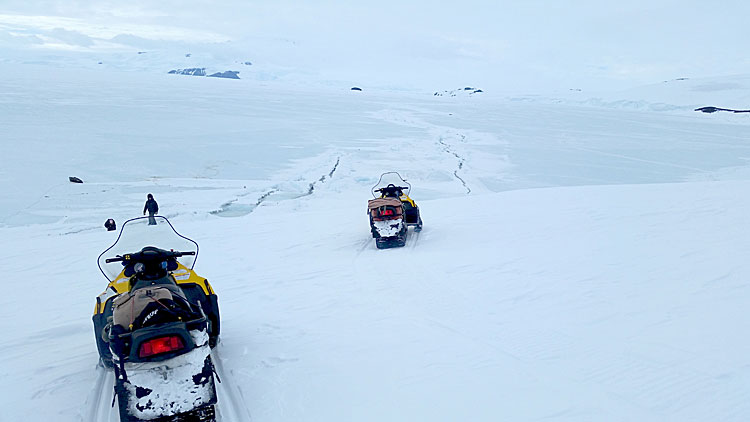
Here are some of the things he has experienced and seen in his own words and in his own photos:
“The dry valleys, across McMurdo Sound from the station, have a lot of science going on, as this is the closest thing to Mars that we have on the planet. I’m slated to go there on Monday with a team of scientists from Colorado who are studying cryconites — melt holes in glaciers that have microbial life in them.
My job is to get the scientists safely onto the glacier and to also assist them getting to the summit of a nearby peak to collect soil samples.
“The other pic shows a part of the Labyrinth, an area with a bunch of complex canyons. There are some pretty big cliffs here (maybe up to 400 feet) that look like they might be welded tuff.
“As a member of the US Antarctic search and rescue team, we are learning how to use radio direction finders to locate downed aircraft or a person who has a radio that we can home in on. Last week we learned how to use ground penetrating radar to locate crevasses hidden in the glaciers.”
Looking at these photos make it seem like being on another planet.